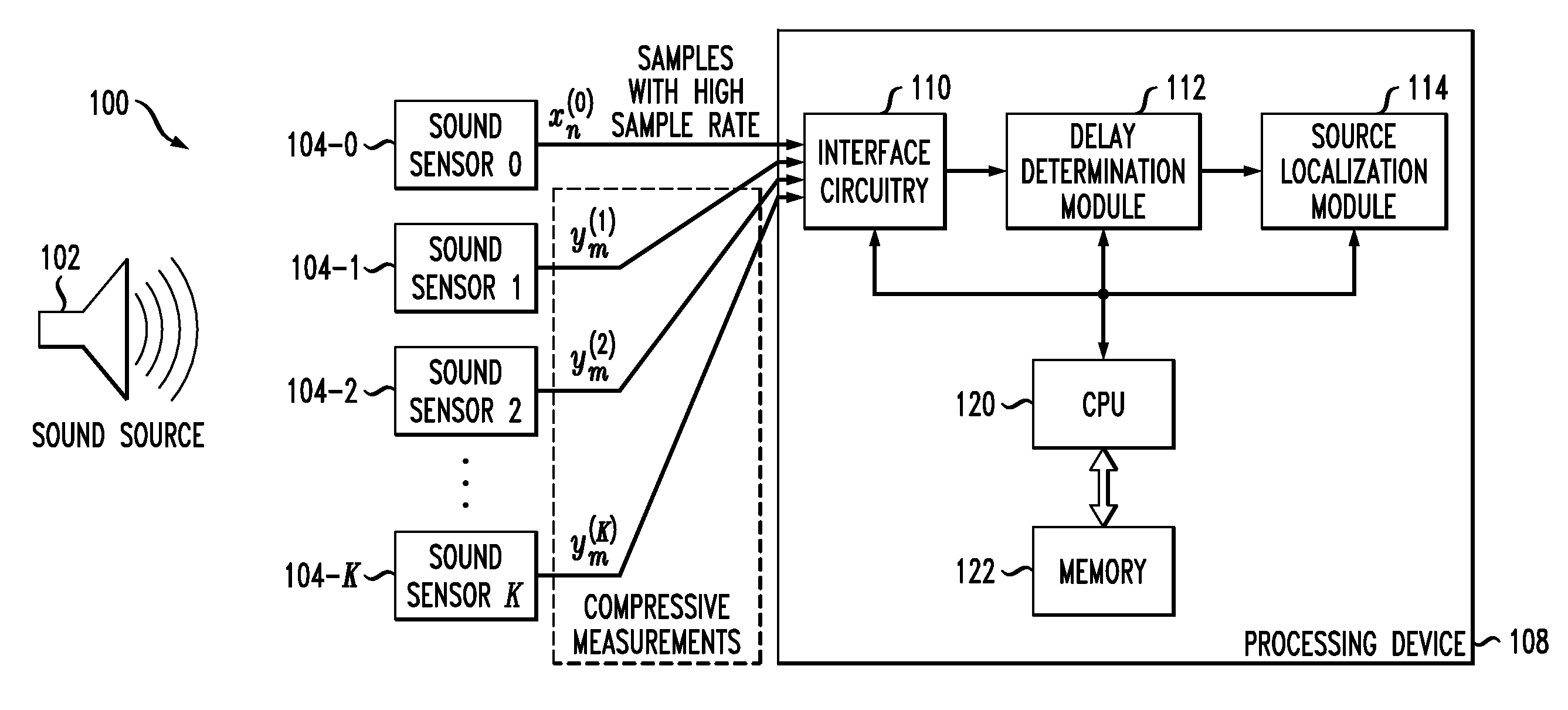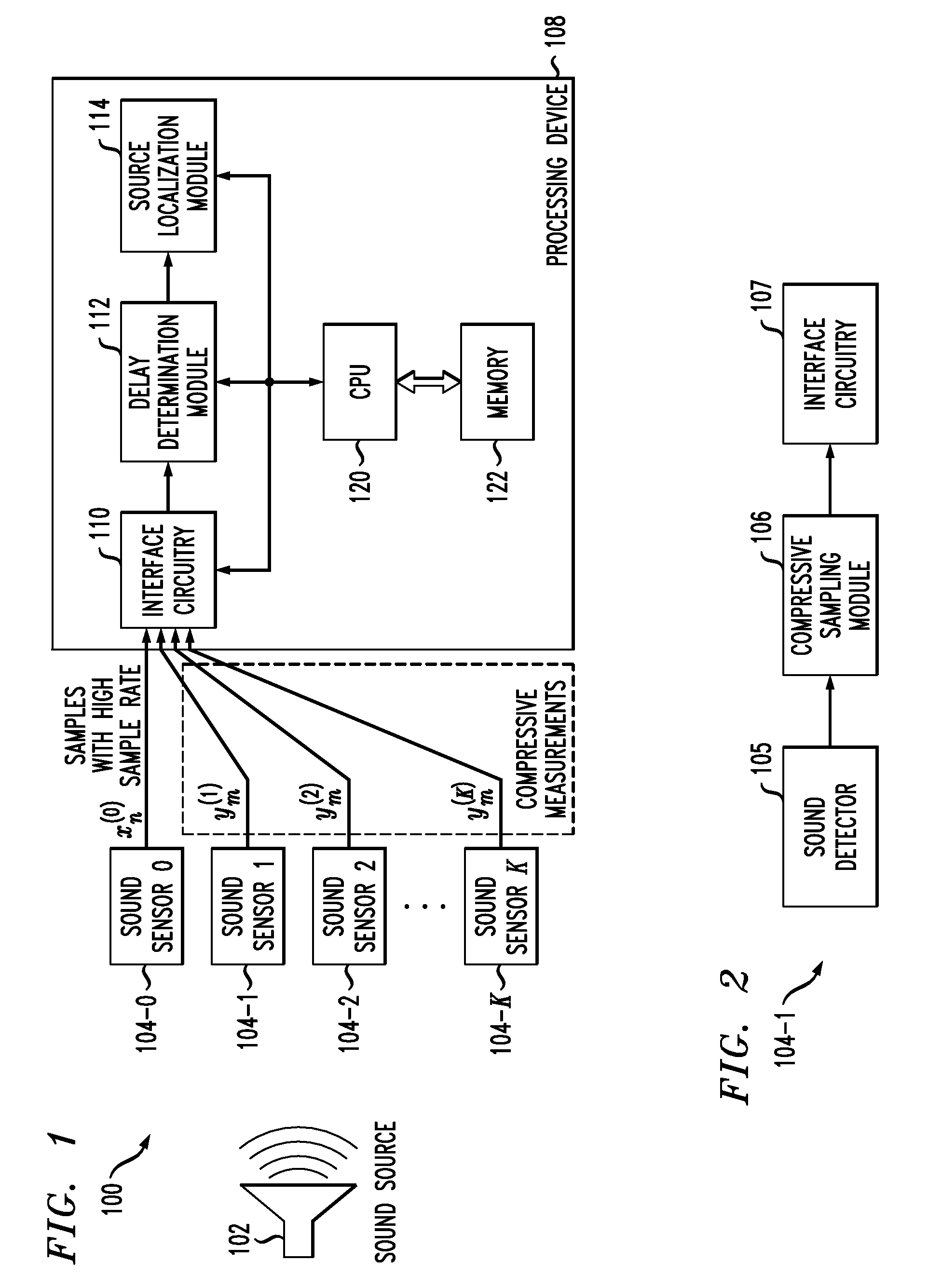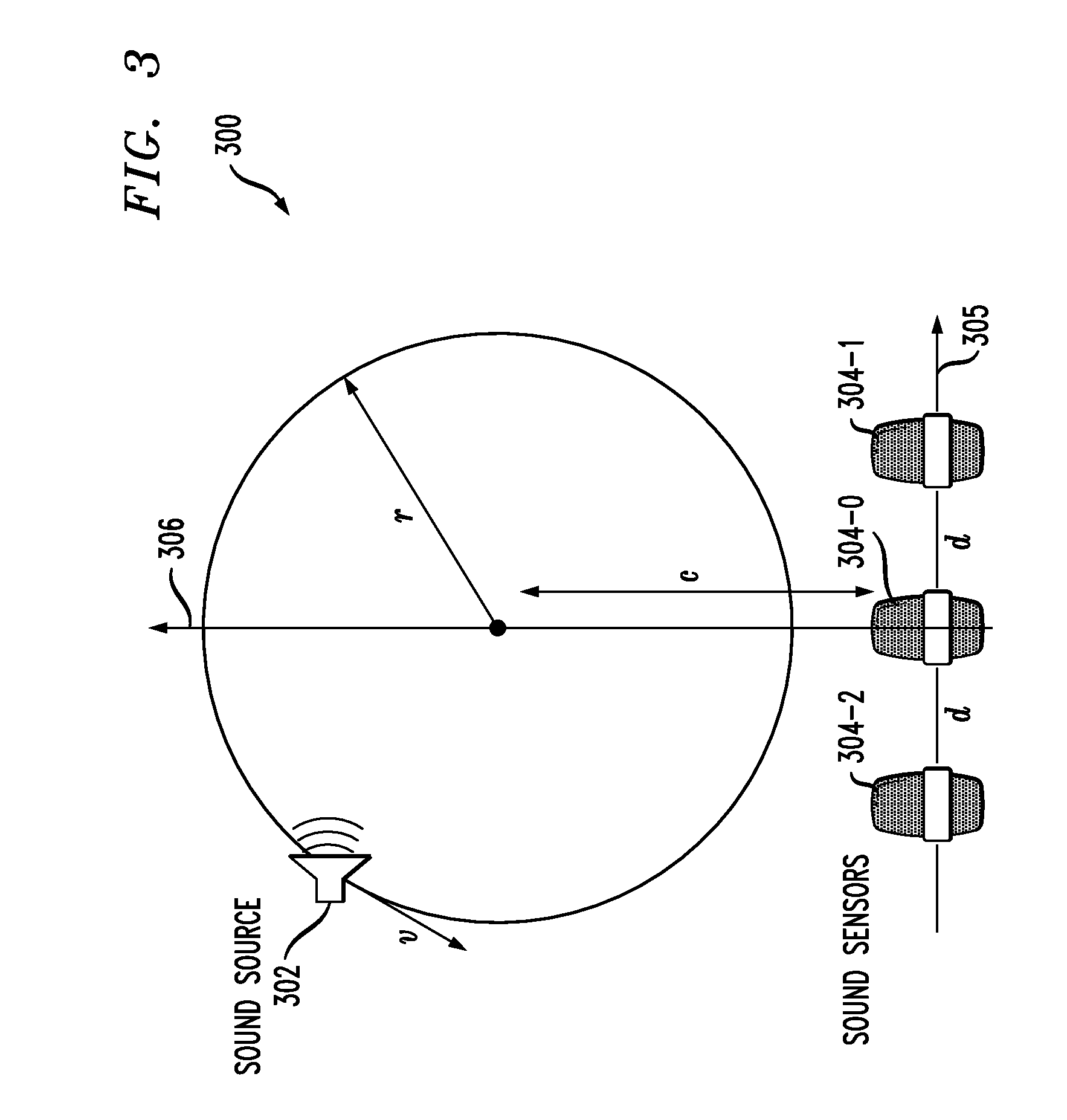Signal source localization using compressive measurements
a compression measurement and signal source technology, applied in the field ofsignal processing, can solve the problems of unduly increasing the cost, complexity and power consumption of the sensor, and the problem of other types of signal source localization applications, and achieve the effect of reducing the sampling ra
- Summary
- Abstract
- Description
- Claims
- Application Information
AI Technical Summary
Benefits of technology
Problems solved by technology
Method used
Image
Examples
Embodiment Construction
[0013]The present invention will be illustrated herein in conjunction with exemplary communication systems and associated sensor networks, processing devices and signal localization techniques. It should be understood, however, that the invention is not limited to use with the particular types of systems, devices and techniques disclosed. For example, aspects of the present invention can be implemented in a wide variety of other communication, sensor network or other processing system configurations, and in numerous alternative compressive sampling applications.
[0014]FIG. 1 shows a communication system 100 in which an acoustic signal from a sound source 102 is detected by each of a plurality of sound sensors 104-0, 104-1, 104-2, . . . 104-K. A designated subset of the set of K+1 sensors 104 generate respective compressive measurements, while at least one of the sensors 104 not in the designated subset generates a non-compressive measurement. More particularly, in the present embodim...
PUM
 Login to View More
Login to View More Abstract
Description
Claims
Application Information
 Login to View More
Login to View More - R&D
- Intellectual Property
- Life Sciences
- Materials
- Tech Scout
- Unparalleled Data Quality
- Higher Quality Content
- 60% Fewer Hallucinations
Browse by: Latest US Patents, China's latest patents, Technical Efficacy Thesaurus, Application Domain, Technology Topic, Popular Technical Reports.
© 2025 PatSnap. All rights reserved.Legal|Privacy policy|Modern Slavery Act Transparency Statement|Sitemap|About US| Contact US: help@patsnap.com



